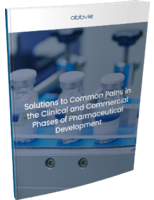ASTM Groundwater Sampling Standard enhances remediation efficacy.
Press Release Summary:
ASTM D7929, Guide for Selection of Passive Techniques for Sampling Groundwater Monitoring Wells, will aid groundwater samplers by examining advantages, disadvantages, and limitations of 3 types of passive samplers: passive-grab samplers, diffusion samplers, and accumulation samplers. According to ASTM member Louise Parker, rapid development of this technology necessitated allowance for application of new methods and devices as they are developed.
Original Press Release:
New ASTM Standard Will Provide Better Remediation Through Effective Groundwater Sampling
One of the keys to successful remediation of a contaminated property is effective groundwater sampling. A new ASTM standard will aid groundwater samplers by taking a look at three types of passive samplers and their advantages, disadvantages and limitations.
The new standard is ASTM D7929, Guide for Selection of Passive Techniques for Sampling Groundwater Monitoring Wells. The three types of samplers discussed are:
• Passive-grab samplers, used to collect a whole water sample from a discrete depth or interval within the well after a predetermined deployment period.
• Diffusion samplers, which rely on diffusion of analytes of interest through a membrane into distilled or deionized water contained inside the sampler.
• Accumulation samplers, in which diffusion through a membrane and then sorption by sorbent media occurs to accumulate the analytes of interest within the sampler.
ASTM member Louise Parker, who recently retired from U.S. Army Cold Regions Research, notes that the new standard is very flexible.
“Because this technology has seen rapid development, we felt that it was important that this guide not be restrictive, but rather would allow application of new methods and devices as they are developed,” says Parker.
The standard was designed to provide a broad user audience with the resources they need to enhance their involvement in groundwater sampling. Regulators, samplers, technology developers and laboratory technicians will all find ASTM D7929 to be a helpful tool for their work.
ASTM D7929 was developed by Subcommittee D18.21.04 on Groundwater Sample Collection and Handling, part of ASTM Committee D18 on Soil and Rock. Interested volunteers are always welcome to join D18.21.04 in developing proposed new standards.
The subcommittee is currently working on the reinstatement of a practice on low-flow purging and sampling of groundwater. Equipment developers and manufacturers are encouraged to join, as are members of both the regulatory and sampling communities.
To purchase standards, visit www.astm.org and search by the standard designation, or contact ASTM Customer Relations (tel +1.877.909.ASTM; sales@astm.org). ASTM welcomes participation in the development of its standards. Become a member at www.astm.org/JOIN.
For more news in this sector, visit www.astm.org/sn-environmental or follow us on Twitter @ASTMEnvironment.
ASTM Committee D18 Next Meeting: Jan. 2528, 2015, January Committee Week, New Orleans, La.
Technical Contact:
Louise Parker
U.S. Army Cold Regions Research
Hanover, N.H.
tel +1.603.646.4393
slbparker@comcast.net
ASTM Staff Contact:
Robert Morgan
tel +1.610.832.9732
rmorgan@astm.org
ASTM PR Contact:
Barbara Schindler
Phone: 610-832-9603
bschindl@astm.org




